Dried hibiscus is an ingredient found in many cuisines the world over, principally as a refreshing drink enjoyed either hot or cold. Imparting a tangy, floral flavour and aroma to whatever preparation it graces, dried hibiscus is reminiscent of the tartness of cranberries, barberries, and other field berries. Deeply garnet when dried, gorgeously rosy when ground, and glowingly crimson when steeped in liquid, dried hibiscus can be used dried, rehydrated, and even cooked.
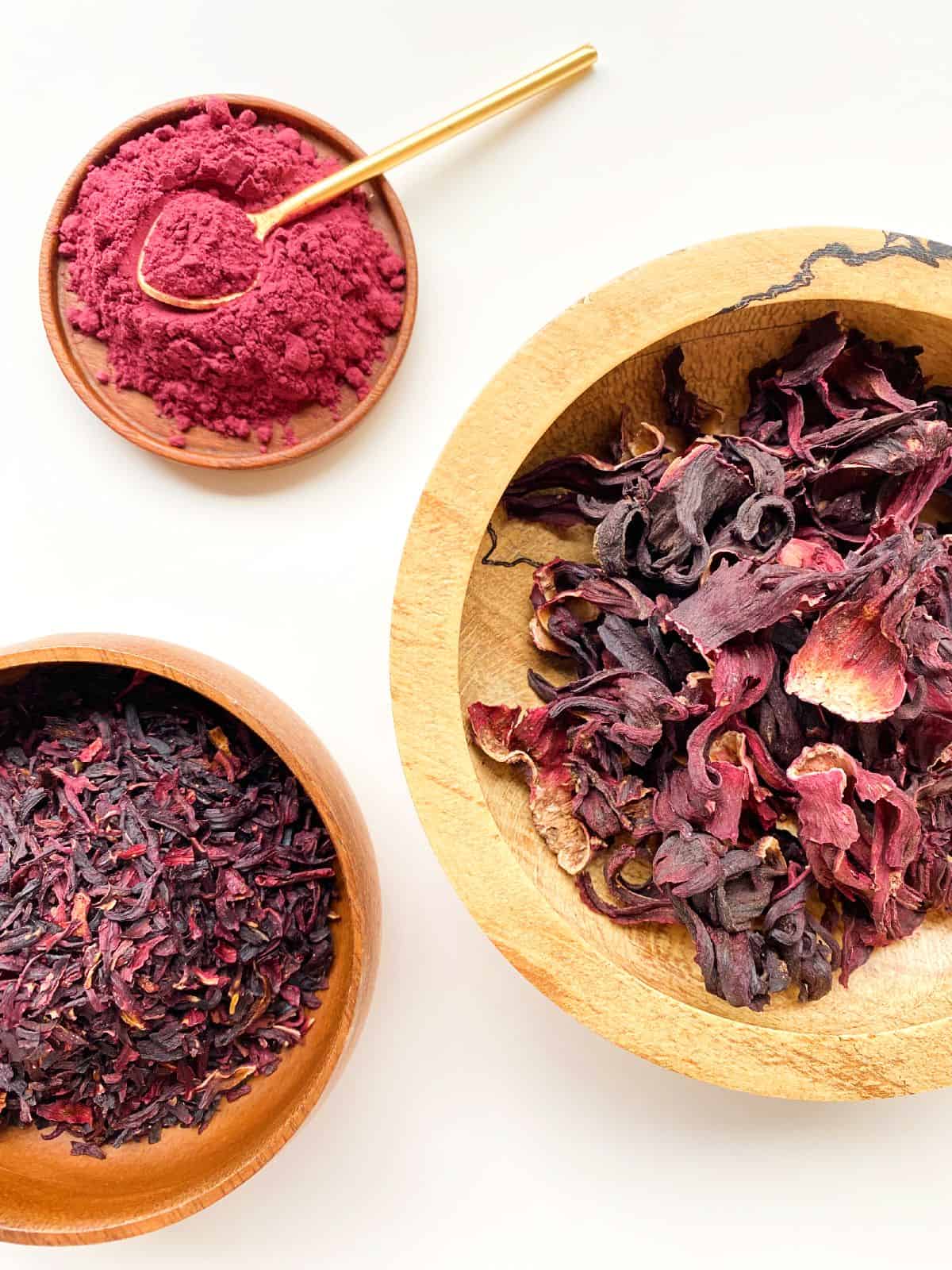
In Mexico, Central, and South America, dried hibiscus is the principal ingredient in the tart beverage agua de Jamaica, known as the ever popular sorrel drink throughout the Caribbean, and celebrated as bissap, the national beverage of Senegal. Dried hibiscus is featured as the main ingredient of the chilled, sweet thirst quencher grajeab in Thailand, and also enjoyed either hot or cold as karkadé in Egypt. Herbal teas across Europe and North America also feature this floral ingredient, alone or paired with other herbs.
Since at least the era of Ancient Egypt, dried hibiscus has been used in the preparation of both food and drink. Apart from its mainstay as a beverage ingredient, dried hibiscus can be used in a variety of other culinary forms; rehydrated and then chopped and added to salads, sauteed with spices and other vegetables as a filling for tacos or arepas, dried and used as a powder in drinks and desserts, or blended into salad dressings or fruit based preparations.
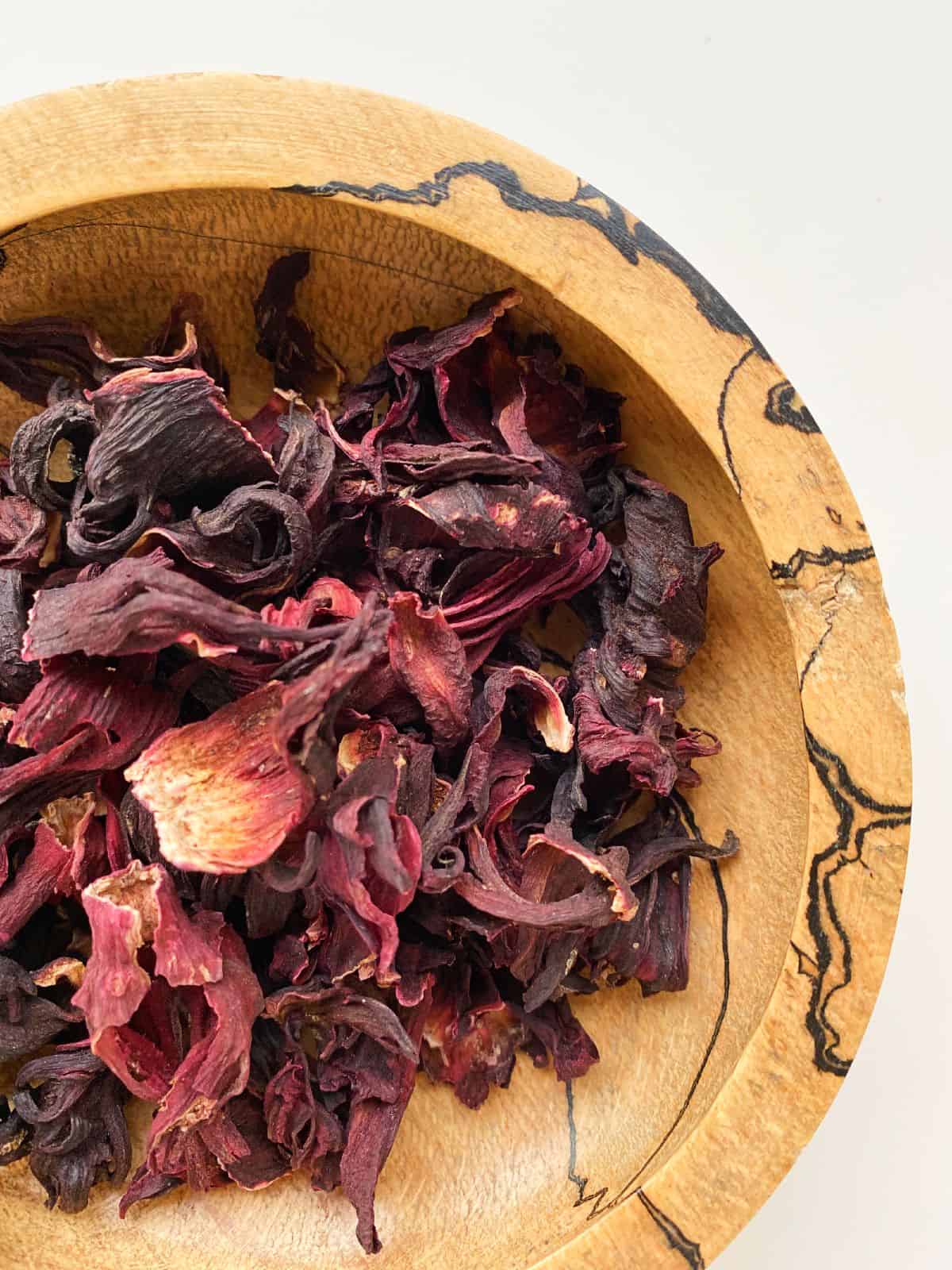
I would be remiss if I didn’t clarify that dried hibiscus is actually not a dried version of the large petaled flower itself as you might imagine, but rather the dried “calyx” or the pod-like structure that is left behind after the hibiscus flower falls off; my botanist step-father would never forgive me for omitting this information!
Dried hibiscus can be found whole and dried, crumbled into a berry coloured loose leaf tea, or finely ground into the most appealing magenta hued powder. I’m especially enamoured with hibiscus powder, both for its bright rosy hues and its tangy berry- forward flavours. While it makes a delightful ingredient in preparations ranging from drinks to cookie icings, I also love to sift a little bit of the outrageously pink powder on top of anything that would benefit from its tang and enticing visual appeal. If you can’t find hibiscus powder, it’s easy enough to make your own using dried hibiscus pieces as a starting point, then using a spice grinder to process it until finely ground.
Where to Find Dried Hibiscus
Because hibiscus is so widely used across so many cuisines, it can be found in a variety of stores, from health food shops to Caribbean, African, and Middle Eastern grocers. I have even found dried hibiscus in bulk food stores, and some specialty spice vendors also stock it, as well as various online sources. If you can’t find whole or dried hibiscus pieces, but need a small amount of hibiscus for a recipe, you can also use the contents of hibiscus tea bags, as long as hibiscus is listed as the only ingredient, as it is often blended with other ingredients.
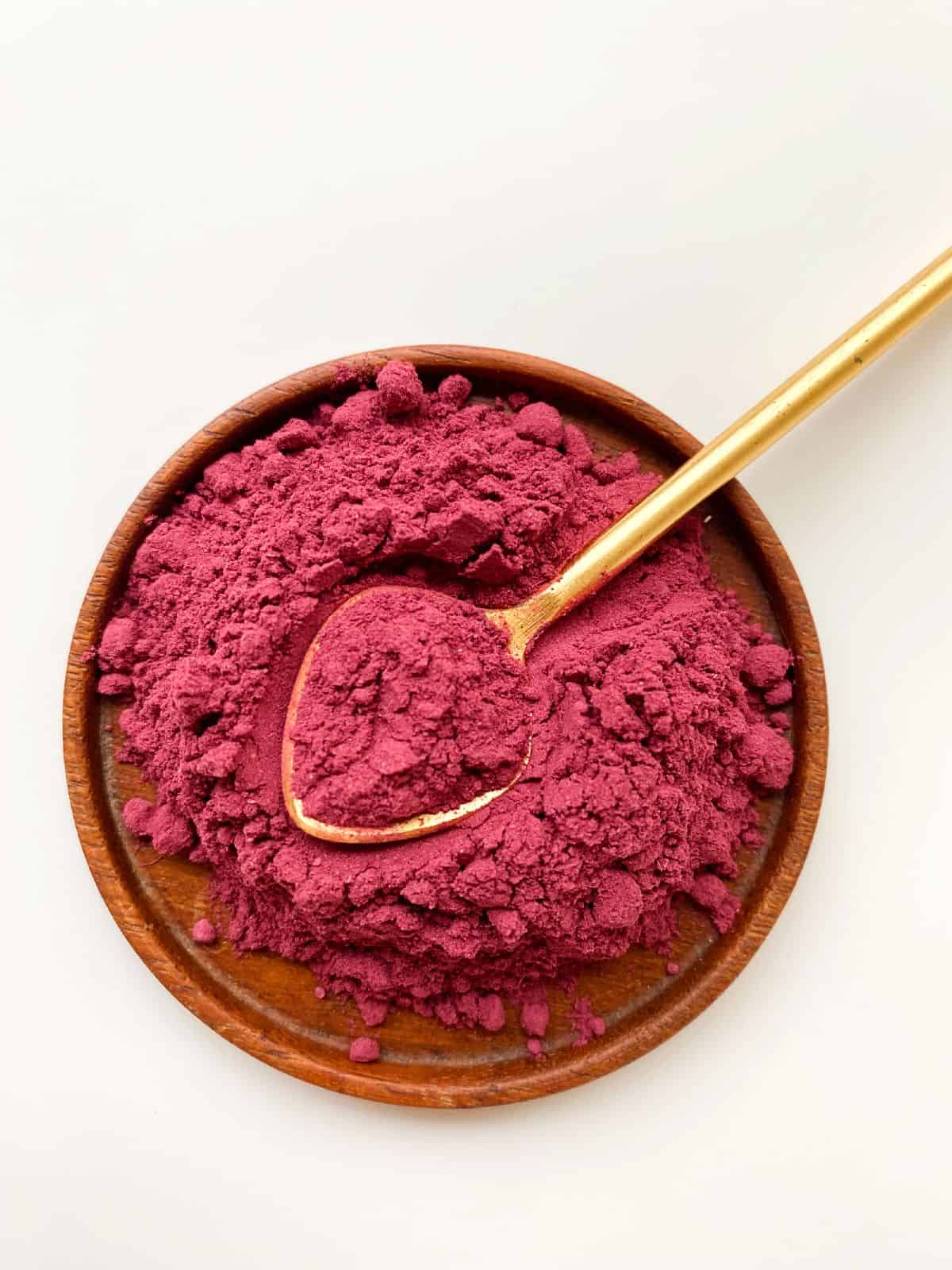
Ways to Use Dried Hibiscus
In its most simple preparation, dried hibiscus can be imbibed as a hot tea or refreshing cold drink, by steeping the dried flowers, in whole or loose leaf form, in hot water as you would any herbal tea, then chilling as desired. As hibiscus is very tart, natural cane sugar, agave, or honey can be used to sweeten hibiscus beverages to delicious effect, tempering its natural sharpness and astringency. Sweetened hibiscus preparations offer a combination of tartness and sweetness that is both refreshing, appetite stimulating, and craveable. Hibiscus based drinks also pair extremely well with lime or lemon as a companion flavour, either squeezed directly into a serving of tea, or used when brewing lemonades or limeonades.
For an easy and delectable way to savour the flavour of hibiscus in a fruity cooked preparation, try my Rhubarb Cordial and Rhubarb Butter with Hibiscus and Vanilla, an single recipe that generously provides the maker with two distinct preparations, a cordial and a fruit butter, that can each be used in a variety of ways.
Whole hibiscus flowers can be rehydrated and chopped, and added to salads, in baking, or anywhere that you would use dried cranberries or other tart fruit such as barberries or dried sour cherries. The rehydrated flowers can also be sauteed with other vegetables and herbs for a savoury filling in arepas, tacos, or enchiladas, or blended into salad dressings, homemade bbq sauces, or tangy marinades. Dried and ground hibiscus powder can be used to flavour cocktails, blended into meringues, pavlovas, or icings, or blended into pouring cream, whipped cream, or yogurt for a tangy and floral accent.


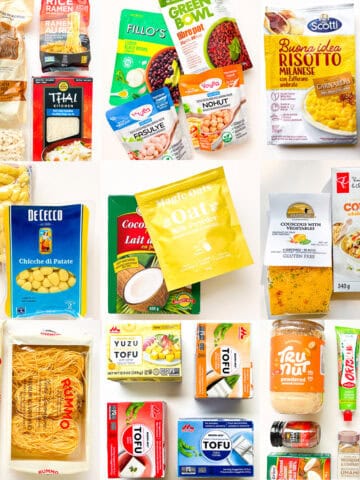
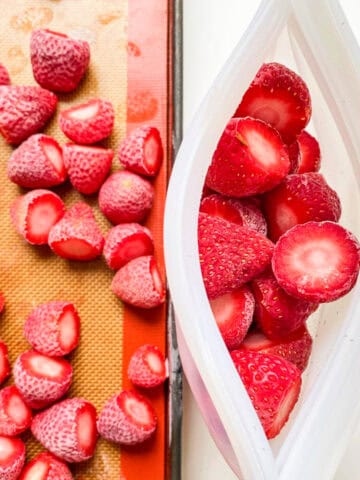

Leave a Reply